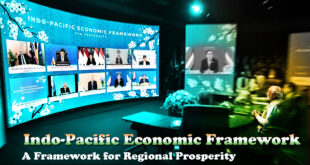T.N. tops NITI Aayog Export Preparedness Index 2022, Gujarat drops to fourth
India has registered a significant decline of 9.89 percentage points in the number of multidimensionally poor, from 24.85% in 2015-16 to 14.96% in 2019-2021, says the “National multidimensional poverty index: a progress review, 2023”, released by NITI Aayog here on Monday.
The study says nearly 13.5 crore people came out of multidimensional poverty during the period, assessed by identifying “acute deprivations in health, education and standard of living” using United Nations-approved parameters.
The report said rural areas witnessed the fastest decline in poverty from 32.59% to 19.28%, mainly due to a decrease in number of multidimensionally poor in States such as Bihar, Uttar Pradesh, Madhya Pradesh, Odisha, and Rajasthan. Delhi, Kerala, Goa, and Tamil Nadu have the least number of people facing multidimensional poverty, along with the Union Territories. Bihar, Jharkhand, Meghalaya, Uttar Pradesh, and Madhya Pradesh top the chart where the percentage of population which is multidimensionally poor is high.
Multidimensional poverty in urban areas, during the same period, saw a decrease from 8.65% to 5.27%. “Uttar Pradesh registered the largest decline in number of poor with 3.43 crore people escaping multidimensional poverty,”.
The National Multidimensional Poverty Index
(MPI) is a measurement tool used to assess poverty at the national level based on multiple dimensions of deprivation. It provides a more comprehensive understanding of poverty beyond just income or monetary indicators.
The MPI was developed by the United Nations Development Programme (UNDP) and the Oxford Poverty and Human Development Initiative (OPHI). It takes into account various indicators across different dimensions, such as education, health, standard of living, and other relevant factors that contribute to poverty.
The MPI identifies individuals or households as multidimensionally poor if they are deprived in a certain percentage of the weighted indicators. The specific indicators and their weights may vary across countries depending on the national context and priorities. Some common indicators include years of schooling, child mortality, access to clean water and sanitation, electricity, housing quality, and assets ownership.
 Chinmaya IAS Academy – Current Affairs Chinmaya IAS Academy – Current Affairs
Chinmaya IAS Academy – Current Affairs Chinmaya IAS Academy – Current Affairs



